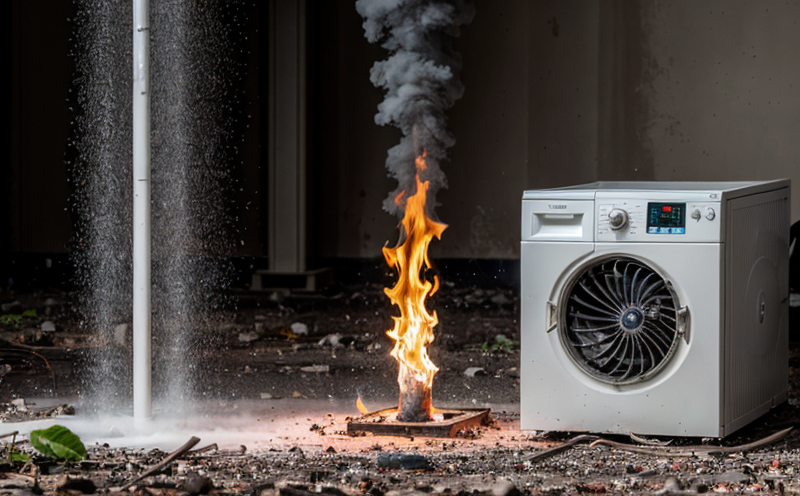IEC 62932-2-1 Environmental Stress Testing of Flow Batteries
The International Electrotechnical Commission (IEC) Standard IEC 62932-2-1 defines a series of tests for flow batteries, which are an important class of energy storage systems. This standard is specifically designed to ensure the reliability and durability of these batteries under various environmental stress conditions that they might encounter in real-world applications.
Flow batteries are characterized by their ability to store large amounts of electricity by separating the active materials into two fluid electrolytes, which are pumped through a cell stack where chemical reactions occur. This design allows for scalability and long-term storage, making them particularly useful in renewable energy systems like solar power and wind farms.
The environmental stress tests outlined in IEC 62932-2-1 aim to evaluate how well the flow batteries can withstand harsh conditions such as high temperatures, low temperatures, humidity, and vibration. These tests are crucial for ensuring that the batteries perform reliably under all expected operating conditions, thereby enhancing their overall safety and longevity.
During these tests, the battery is subjected to a series of environmental conditions that simulate real-world scenarios. For instance, it may be exposed to high temperatures to check its performance under such stressors. The standard specifies exact test methods and acceptance criteria for each parameter tested. This ensures consistency and reliability across different manufacturers and models.
The testing process involves preparing the flow battery according to specific guidelines provided in the standard. Once prepared, the specimen is subjected to the defined environmental stresses. The data collected during these tests are then analyzed using sophisticated instrumentation to assess the performance of the battery under each condition. Reporting must adhere strictly to the requirements set forth by IEC 62932-2-1.
This standard plays a vital role in ensuring that flow batteries meet stringent quality and safety standards, which is critical for their widespread adoption in various sectors including renewable energy, industrial applications, and transportation. By adhering to these tests, manufacturers can demonstrate compliance with international standards, thereby gaining competitive advantage and market acceptance.
Applied Standards
| Standard | Description |
|---|---|
| IEC 62932-2-1 | Environmental Stress Testing of Flow Batteries |
Benefits
The benefits of adhering to IEC 62932-2-1 are numerous and significant. Firstly, it ensures that the flow batteries meet stringent quality and safety standards, which is critical for their widespread adoption in various sectors such as renewable energy, industrial applications, and transportation.
Secondly, by adhering to this standard, manufacturers can demonstrate compliance with international norms, thereby gaining competitive advantage and market acceptance. This can lead to increased sales and better customer satisfaction due to the reliability of the products.
Thirdly, IEC 62932-2-1 helps in identifying potential weaknesses or issues within the flow batteries before they are deployed in real-world applications. By addressing these issues early on, manufacturers can improve the overall performance and safety of their products.
Futhermore, compliance with this standard can also lead to cost savings in the long run by reducing warranty claims and product recalls. This is because the tests help to ensure that the batteries are robust enough to withstand the environmental stresses they will encounter during use.
Finally, adhering to IEC 62932-2-1 can enhance the reputation of manufacturers as industry leaders in quality and innovation. This can open up new market opportunities and partnerships within the sector.
International Acceptance and Recognition
The IEC 62932-2-1 standard has gained significant acceptance and recognition globally, particularly within the renewable energy and industrial sectors. Many companies involved in the production of flow batteries have already incorporated this standard into their testing protocols.
Adherence to this standard is not just beneficial for manufacturers but also for end-users who require reliable products that can perform consistently under varying environmental conditions. The widespread adoption of IEC 62932-2-1 reflects the growing importance of quality and safety in energy storage systems, especially as renewable energy sources become more prominent in power generation.
International acceptance of this standard also facilitates easier cross-border trade for companies involved in the flow battery industry. This is because it provides a common benchmark that all parties can refer to, ensuring mutual understanding and trust between different countries and regions.
The recognition of IEC 62932-2-1 within the global market underscores its importance as a key factor in promoting innovation and quality in flow battery technology. It serves as a testament to the reliability and durability of these batteries, which are crucial for the development and sustainability of renewable energy solutions.





